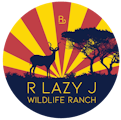Soil, Water, Wildlife Conservation Projects and Improvements
In 2020 we realized that if we wanted to make a difference in the lives of wildlife and be true conservationists, we needed to not only pay attention to the life above ground, but that below the ground as well. We were also very frustrated at how unsuccessful we had been at growing (everything) in a geographic location with inconsistent precipitation and a very short growing season…wind that rips across the fields at 60-90mph and UV that scorches little seedlings trying to make an appearance. We failed miserably at trying to re-establish permanent pasture using conventional plowing and planting -as was recommended to us when we arrived on property.
I kept saying, “There has to be a better way!” and I researched and researched until I came across a TED talk by Gabe Brown on regenerative agriculture. Then I read his book, then I read Masanobu Fukuoka and Nicole Masters. I realized that 1. Our soil was void of life below ground and 2. I had an idea of how I could change that and 3. we can’t save species above ground if we don’t care for those below ground. I found the right online tribes to exchange ideas with and suddenly there was hope and it looked like a very small no-till plow, composting worms, and a manure spreader.
We changed our planting to no till, spread composted hay and manure and what do you know – we were able to start growing pasture using a diverse cover crop mix of warm and cool season brassicas, root crops and grasses. We added livestock (cattle, sheep and goats) and intensive mob grazing and saw one of pastures respond in an amazingly positive way at the zoo. Our challenges with the other paddocks was and still is how do we rotate or mob graze animals that wouldn’t respect a 3′ electric fence and don’t always cooperate when being herded. Also our hay ground (located a half mile away from the zoo) has heavy predator pressure from town dogs, coyotes and even wolves making it a challenge to graze our sheep and goats there. In 2022 we took out 800 small bales, but prairie dogs, elk and deer decimated so much of our crop that there wasn’t anything to bale in 2023.
It seems like we have often taken 2 steps forward and one step back, but we do continue to move forward. This winter when it rained or snowed, I went out to the pasture and saw green growing grass and the tops of purple top turnips and my heart was full knowing that they were feeding the soil microbes beneath the ground. When you come to visit and see bare ground, know that we are a work in progress and welcome shared experience.
Our plans for 2024 include converting a pasture that we have had mixed results growing pasture grass in – to a no-till market garden. We buy 400 lbs of produce each week and know that the soil, our animals, our families and our community could benefit from onsite fresh food production. We are planning a pumpkin patch, strawberry patch and every sort of vegetable and praying that our plans line up God’s plan.
Thank you for taking the time to read this. I look forward to see you at the R Lazy J Ranch.
Sincerely,
Vanessa Roer
